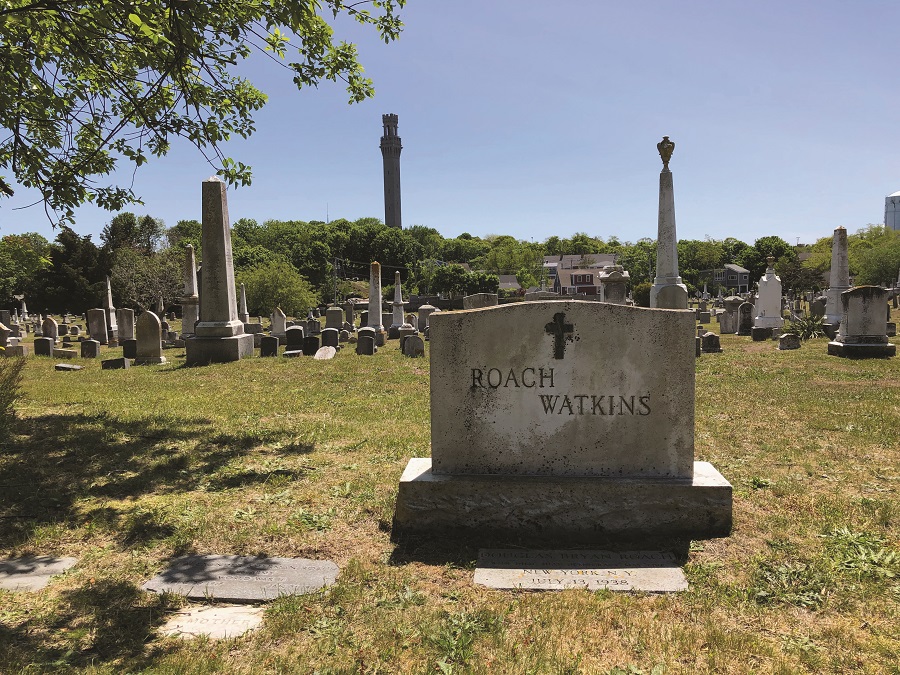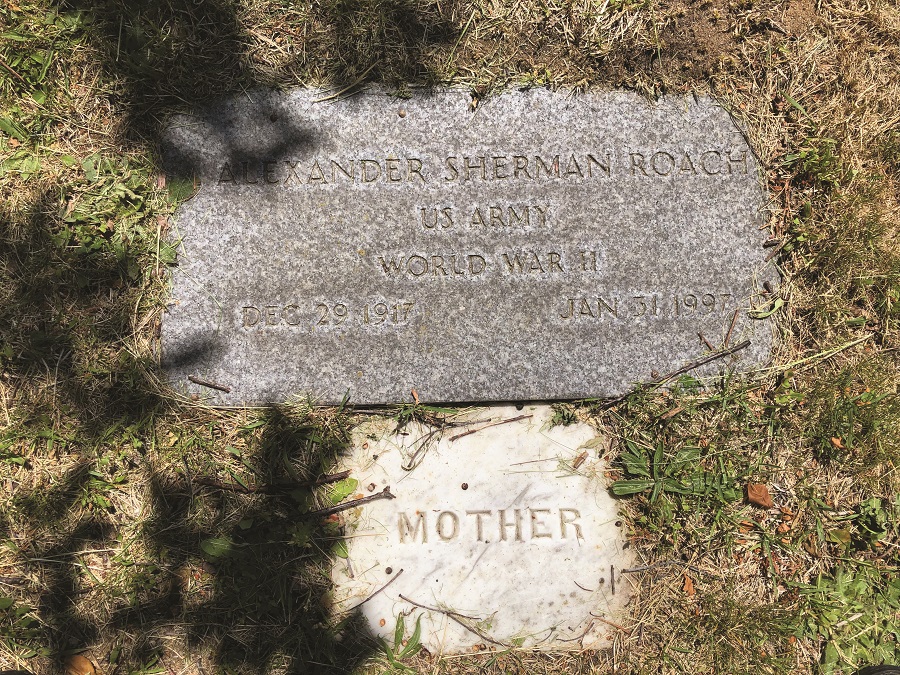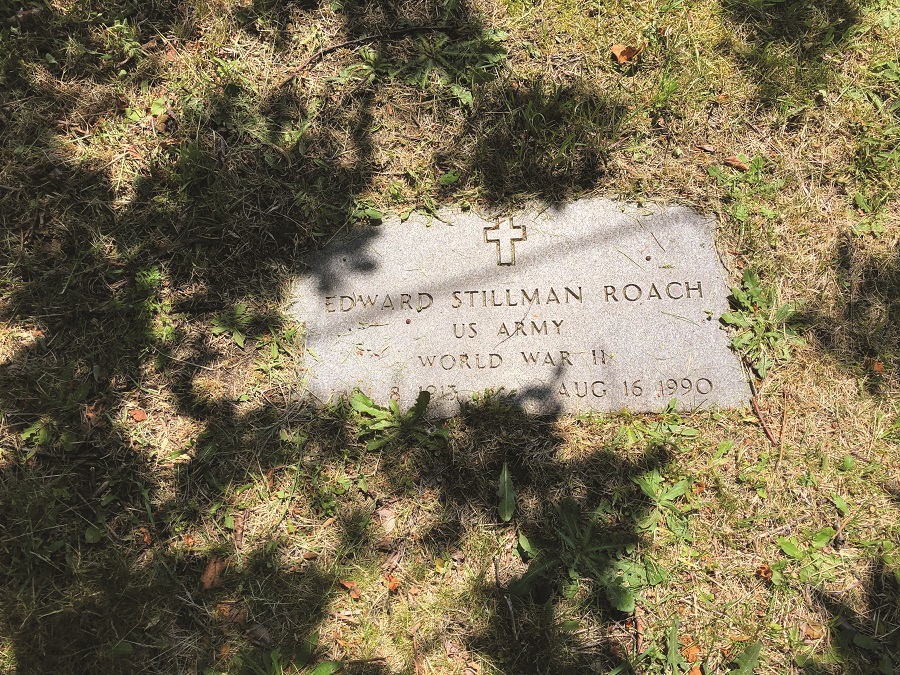PROVINCETOWN — When local developer Thomas Tannariello purchased the land at 24 Conwell St. from the estate of Sherrill Watkins for $2.5 million in January, he knew it had an unusual feature: a family burial plot tucked into its northwest corner. The headstone bears the family names Roach and Watkins, and there are also four flat grave markers.

The burial plot is about a dozen feet from the boundary of the town-owned Hamilton Cemetery. Research into burial records reveals nothing about why the Roach family members were not buried in the cemetery instead of on the family’s land. But Julia Perry, chair of the Provincetown Historical Commission, says it was because of racism. The Roach family and their descendants, the Watkinses, who owned the land for 124 years, were Black.
“The Roaches were an extraordinary family,” said Perry in an email to the Independent. “Because they were Black, they were not permitted to be buried in town cemeteries. They were buried on their own property as close to the adjacent cemetery as they could get.”
The Hamilton Cemetery, which dates to the early 1800s, was privately owned when the family began using its own lot for burials. No records have yet been found to verify its original ownership. The town took over the Hamilton Cemetery in 1962 and according to that year’s town report did a great deal of maintenance on it.
Tannariello has divided the Conwell Street land into four lots and recently sold one of the two vacant parcels — the one with the Roach-Watkins burial plot on it — to a couple who currently live in New York City, Michael Tamburro and Robert Tucker. According to Gregory Baldwin, a broker with Christie’s International Real Estate who is Tannariello’s partner, the couple want to build their “dream home” there.
The deed conveying the property from Watkins’s estate to Tannariello makes note of the gravesite: “This conveyance is subject to and encumbered by a home burial site of the Roach Watkins family along the northwest lot line adjacent to the Hamilton-Gifford cemetery, as shown by memorial plaques.”
But the deed conveying the lot with the gravesites from Tannariello to its new owners contains no reference to the burials. It does say the sale was “subject to and together with all matters of record insofar as the same are now in force and applicable.” Research into the earlier deed would be required to learn of the burial site.
The new owners, Tamburro and Tucker, could not be reached for comment in time for this edition.
Asked whether the new owners plan to donate the Roach-Watkins burial plot to the town for incorporation in the Hamilton Cemetery, Baldwin said he didn’t believe they had made a decision. The new owners are aware of the burial site, he said: “The one thing is, they respect the history of the lot and the gravesite.”
Baldwin declined to provide a reporter with contact information for Tamburro and Tucker. Likewise, he said he could not connect a reporter to the surviving descendants of Sherrill Watkins for their views on the fate of their family’s burial plot. They are, he said, “very private people.”
A Lincoln Brigade Veteran
The Roach family put down roots in Provincetown in the late 1800s. Born on the Caribbean Island of St. Vincent in 1870, Alexander Roach left home at 17 to join a whaling crew, according to his 1932 obituary. After nearly losing his life twice while whaling, Roach arrived in Provincetown and decided “to try working on land.” He worked as a laborer for several local operations, including on the construction of the Pilgrim Monument, according to an article in the 1995 issue of Provincetown Arts magazine by Harriet Jerusha Korim.

According to the Provincetown assessor’s records, Alexander Roach purchased the Conwell Street property for $65 in 1899 and built his house. A scattering of cottages and a couple of sheds were also on the property by 1900, according to the assessor’s records.
Alexander married Margaret Bryan, who had come to Provincetown from South Carolina, and they had six children, four sons and two daughters. Fannie, a daughter born in 1906, died of meningitis when she was 10 months old. Douglass Bryan Roach, born in 1909, became perhaps the best-known member of the family.
According to Korim’s article, Douglass Roach distinguished himself as an athlete at Provincetown High School and became an accomplished wrestler while attending the Massachusetts Agricultural College. After college, Douglass held at least one wrestling exhibition at town hall and traveled the county fair circuit. He held jobs as a carpenter, handyman, and merchant marine, Korim wrote.
Douglass had strong political convictions, joining the International Seamen’s Union and, in 1932, the Communist Party of the U.S.A. A few years later, he became secretary of the Party’s Provincetown unit, according to David W. Dunlap’s account in Building Provincetown. In 1936, when the board of selectmen refused to allow him to use town hall for a Communist-sponsored political rally, Douglass accused officials of violating the Constitutional right to freedom of speech.
In January 1937, Douglass sailed aboard the Paris to join the Abraham Lincoln Brigade, a battalion of nearly 3,000 volunteers organized to fight against fascism in the Spanish Civil War. He served at Jarama and Brunete, according to the Abraham Lincoln Brigade Archives, and returned to the U.S. in September of that same year.
According to Korim’s account, Douglass had been seriously wounded, and on his return, the State Dept. detained him in New York, confiscated his passport, and interrogated him before allowing him to return to Provincetown.
Alexander Roach Jr. told Korim in a 1995 interview that Douglass, who had always possessed a rugged physique, was frail when he returned from Spain, that he went back to New York to work with the Seamen’s Union, and that he died of pneumonia there in July 1938. After a funeral service in New York, two members of the Lincoln Brigade brought his body back to Provincetown where the family held a memorial service.
“The gathering was as much a political demonstration as it was a funeral,” Korim wrote in Provincetown Arts. “The congregation included friends and family, journalists, visiting dignitaries and government agents busily taking down names.”
Although the Lincoln Brigade website has Douglass Bryan Roach buried at the Hamilton Cemetery, his grave marker and those of his brothers Edward Stillman Roach, who died in 1990, and Alexander Jr., who died in 1997, are located adjacent to the headstone in the family plot on the recently sold parcel.
Also at the family plot is a simple stone engraved “Mother,” likely the marker for Margaret Bryan, who died in 1945. Of those four burials, only Edward’s could be confirmed as a cremation.
Number of Burials Is Unknown
Based on the grave markers, there are at least four burials there, but based on the obituaries of Roach family members, there could be several more.

The obituary for Alexander Sr., who died in 1932, identified his burial place as Hamilton Cemetery. He is likely buried in the family plot, although there is no grave marker for him, according to genealogy and history researcher Amy Whorf McGuiggan. Fannie Roach, the daughter who died as a baby, is likely buried there as well, McGuiggan said. Alexander and Margaret’s daughter Ethel Louise and her husband, Peril Watkins, lived in Boston for a time but moved back to 24 Conwell St. in 1990. They both died in 1999, but their obituaries could not be located before the deadline for this edition.
The couple had two sons: Peril Jr., who died at 39 in 1976 and is listed as buried in Provincetown, and Sherrill, who lived in New York but continued to own the Conwell Street property until his death in March 2022. The gravestone bearing the names Roach and Watkins may have been added in 1976 if Peril Jr. was the first Watkins buried there.
Sarah Korjeff, the Cape Cod Commission’s historic preservation specialist, said she had never encountered an issue similar to the Roach family’s. “There are other family cemeteries on the Cape, but I’ve never heard of them being used for anything other than a burial ground,” Korjeff said in an email. She added that the site would likely be protected as historic because African Americans have been an underrepresented group on the Cape.
“Burial on private property is legal under Massachusetts law, so the town has no authority over the Roach cemetery,” Julia Perry of the historical commission wrote. “However, Massachusetts law MGL c.114, 1, states that any land on which a body is buried meets the definition of a cemetery, so the Roach cemetery would fall under state laws protecting cemeteries.”
To date, the only public discussion of the use of the property happened during a planning board review of the subdivision of the lot. That process, called an Approval Not Required hearing, limits the planning board’s focus to whether the lots have adequate area, frontage, and access for subdivision.
Tannariello’s attorney contacted the town’s cemetery commission last December, before the Conwell Street purchase, asking for information about the number of burials there.
In an email last week, cemetery commission chair Sharon Bunn told the Independent that she had no information on the burial plot and had asked whether the developer would be using ground-penetrating radar to map where the remains were located. The attorney said that Tannariello had arranged for such a survey, Bunn said.
“The results were not shared with me, and the attorney has communicated that she is not at liberty to share any private information with anyone,” said Bunn in the email. “It would be very interesting to know what the survey found, but evidently the owner does not want to share the information.”
Baldwin told the Independent last week, “There is one body buried there, and the rest are cremations.” He would not confirm whether the perimeter of the family plot had been delineated.



